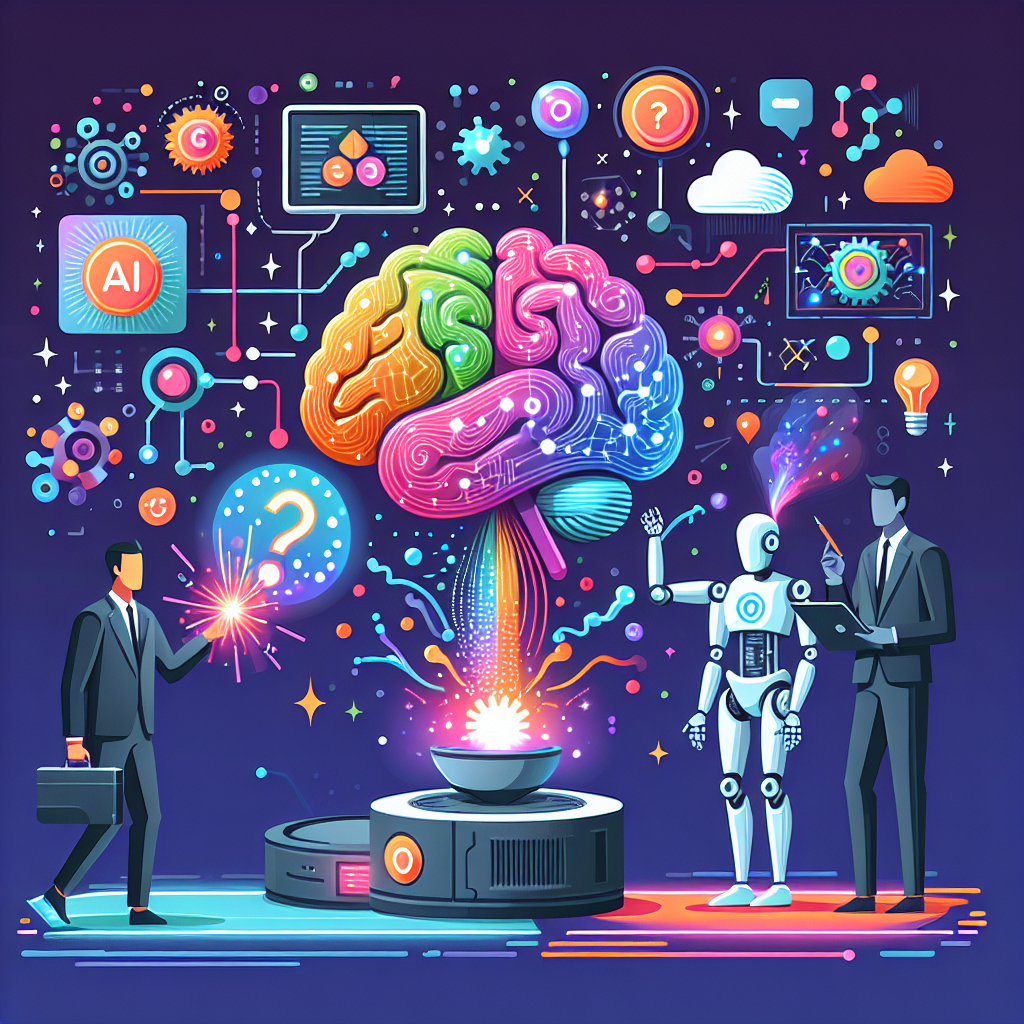Artificial intelligence (AI) and creative thinking may seem like two completely different concepts, but in reality, they have the potential to intersect in powerful ways. AI has already shown its ability to perform tasks such as image recognition, natural language processing, and even creating music and art. When combined with human creativity, AI can open up new possibilities for innovation and problem-solving. In this article, we will explore the intersection of AI and creative thinking, and how this partnership can drive forward new ideas and solutions.
One of the key ways in which AI and creative thinking intersect is through generative AI, which is a type of AI that can create new content. This can include anything from writing articles, composing music, or generating visual art. Generative AI uses algorithms to analyze patterns in existing data and then create new content based on those patterns. This can be a powerful tool for creative thinkers, as it can help them come up with new ideas and concepts that they may not have thought of on their own.
For example, companies like OpenAI have developed AI models such as GPT-3, which is capable of generating human-like text based on a prompt. This can be used for anything from writing articles to generating marketing copy. Another example is Google’s Magenta project, which uses AI to create music and art. These tools can be used by creative professionals to help them come up with new ideas and concepts, or even to automate certain tasks to free up more time for actual creative thinking.
AI can also be used to augment human creativity by providing insights and suggestions. For example, AI can analyze data to identify trends and patterns that humans may not have noticed. This can help creative thinkers come up with new ideas or solutions to problems. AI can also be used to generate suggestions based on a set of criteria, helping creative professionals to explore new directions and possibilities.
Another way in which AI and creative thinking intersect is through the process of automation. AI can be used to automate repetitive tasks, freeing up more time for creative thinking. For example, AI can be used to automate data analysis, allowing creative professionals to focus on interpreting the results and coming up with new ideas. AI can also be used to automate certain aspects of the creative process, such as generating rough drafts or prototypes, allowing creatives to iterate more quickly and experiment with new ideas.
AI can also be used to enhance collaboration and communication among creative teams. For example, AI can be used to analyze data from different sources and provide insights that can help teams make better decisions. AI can also be used to facilitate communication among team members, providing tools for brainstorming, sharing ideas, and collaborating on projects. This can help creative teams work more efficiently and come up with better ideas.
One of the challenges of combining AI and creative thinking is ensuring that the technology does not stifle human creativity. It is important to strike a balance between using AI to enhance creativity and relying too heavily on technology. Creative professionals should view AI as a tool to augment their own abilities, rather than a replacement for human creativity. By using AI to automate certain tasks and provide insights, creative professionals can focus more on the creative aspect of their work.
FAQs:
Q: Can AI really be creative?
A: While AI may not have the same kind of creativity as humans, it can certainly generate new ideas and content based on existing data and patterns. AI can be a powerful tool for creative professionals to come up with new ideas and solutions.
Q: How can AI enhance creative thinking?
A: AI can enhance creative thinking by providing insights and suggestions based on data analysis. It can also automate repetitive tasks, freeing up more time for creative professionals to focus on the creative aspect of their work.
Q: Will AI replace human creativity?
A: AI is unlikely to replace human creativity entirely. Instead, it can be used as a tool to augment human creativity and enhance the creative process. Creative professionals should view AI as a tool to assist them in their work, rather than a replacement for human creativity.
Q: What are some examples of AI tools that can enhance creative thinking?
A: Examples of AI tools that can enhance creative thinking include generative AI models like GPT-3, which can generate human-like text based on a prompt, and tools like Google’s Magenta project, which can create music and art using AI algorithms.
In conclusion, the intersection of AI and creative thinking has the potential to drive forward new ideas and solutions. By using AI to augment human creativity, creative professionals can come up with new concepts and innovations that may not have been possible otherwise. It is important for creative professionals to view AI as a tool to enhance their own abilities, rather than a replacement for human creativity. By striking a balance between using AI and relying on human creativity, we can unlock new possibilities for innovation and problem-solving.

